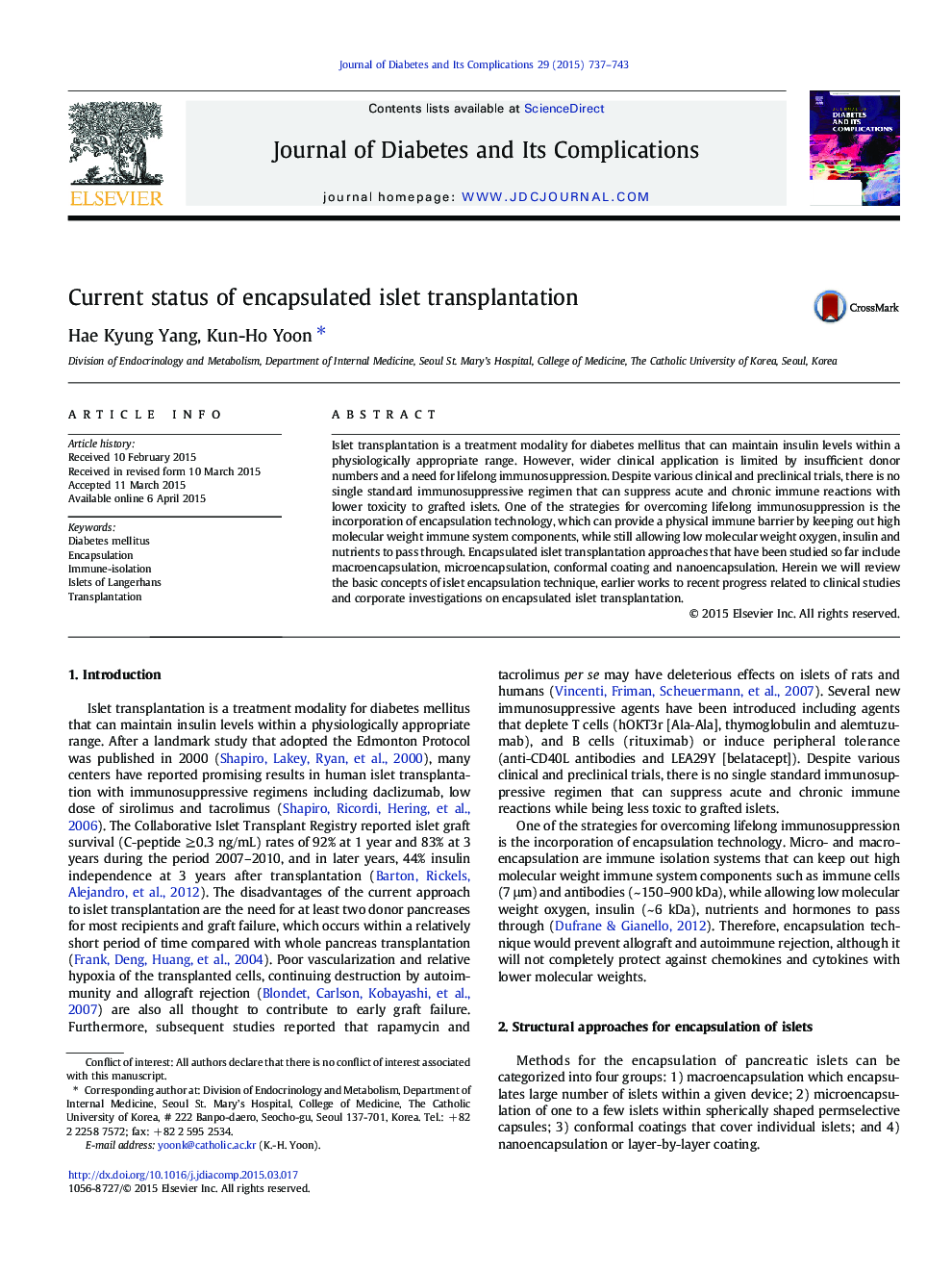| Article ID | Journal | Published Year | Pages | File Type |
|---|---|---|---|---|
| 2804216 | Journal of Diabetes and its Complications | 2015 | 7 Pages |
Islet transplantation is a treatment modality for diabetes mellitus that can maintain insulin levels within a physiologically appropriate range. However, wider clinical application is limited by insufficient donor numbers and a need for lifelong immunosuppression. Despite various clinical and preclinical trials, there is no single standard immunosuppressive regimen that can suppress acute and chronic immune reactions with lower toxicity to grafted islets. One of the strategies for overcoming lifelong immunosuppression is the incorporation of encapsulation technology, which can provide a physical immune barrier by keeping out high molecular weight immune system components, while still allowing low molecular weight oxygen, insulin and nutrients to pass through. Encapsulated islet transplantation approaches that have been studied so far include macroencapsulation, microencapsulation, conformal coating and nanoencapsulation. Herein we will review the basic concepts of islet encapsulation technique, earlier works to recent progress related to clinical studies and corporate investigations on encapsulated islet transplantation.
